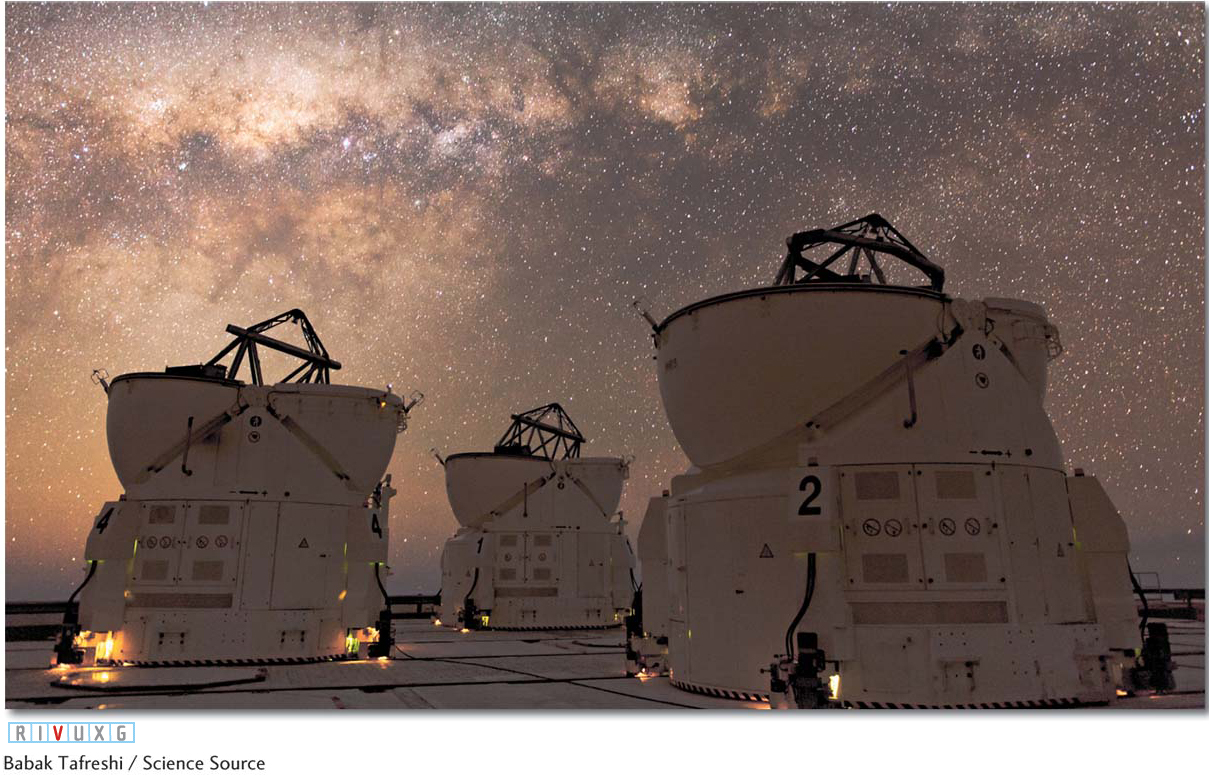Chapter Introduction
49

Light and Telescopes
WHAT DO YOU THINK?
 What is light?
What is light? Which type of electromagnetic radiation is most dangerous to life?
Which type of electromagnetic radiation is most dangerous to life? What is the main purpose of a telescope?
What is the main purpose of a telescope? Why do all research telescopes use mirrors, rather than lenses, to collect light?
Why do all research telescopes use mirrors, rather than lenses, to collect light? Why do stars twinkle?
Why do stars twinkle? Which is hotter, a “red-
Which is hotter, a “red-hot” or a “blue- hot” object?  What color does the Sun emit most brightly?
What color does the Sun emit most brightly?
Answers to these questions appear in the text beside the corresponding numbers in the margins and at the end of the chapter.
50
Our understanding of the universe comes primarily from visible light and other forms of radiation collected by telescopes. We begin this chapter by exploring the nature of this radiation. Then we study telescopes. Finally, we examine how light and other radiations are created and emitted.
In this chapter you will discover
the connection between visible light, radio waves, X-
rays, and other types of electromagnetic radiation the debate in past centuries over what light is and how Einstein resolved this question
how telescopes collect and focus light
the limitations of telescopes, especially those that use lenses to collect light
why different types of telescopes are used for different types of research
how astronomers use the entire spectrum of electromagnetic radiation to observe the stars and other astronomical objects and events
what the new generations of land-
based and space- based high- technology telescopes being developed can do the origins of electromagnetic radiation
the structure of atoms
that stars with different surface temperatures emit different intensities of electromagnetic radiation
that astronomers can determine the chemical compositions of stars and interstellar clouds by studying the wavelengths of electromagnetic radiation that they absorb or emit
how to tell whether an object in space is moving toward or away from Earth
 Three of the four buildings containing the Very Large Telescope optical telescopes at the Paranal Observatory, Atacama, Chile.
Three of the four buildings containing the Very Large Telescope optical telescopes at the Paranal Observatory, Atacama, Chile.